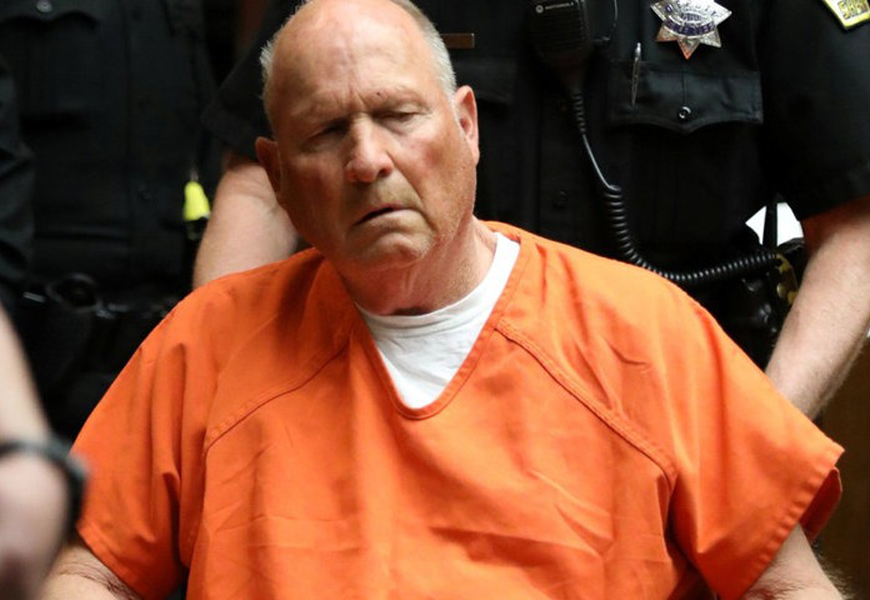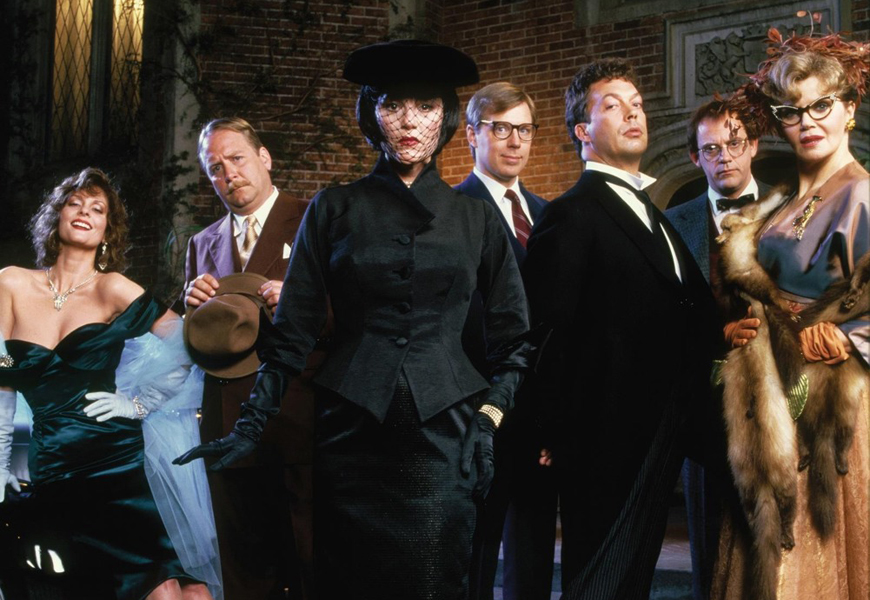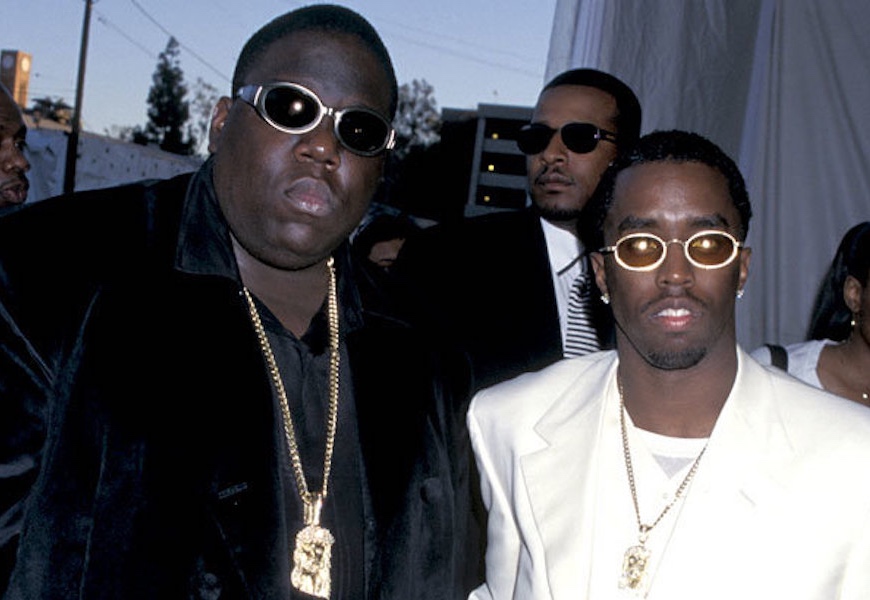Welcome to True Crime Tuesday where we review, recommend and generally obsess over everything crime-related.
When it comes to cold cases, the so-called Golden State Killer, aka the East Area Rapist, aka the Original Night Stalker, wasn’t really on a lot of people’s radars. That is, until the last couple years when the 40-year-old investigation started to see the spotlight a little more.
Crime writer Michelle McNamara’s recently published book I’ll Be There in the Dark detailed the mysterious killer’s crime spree and her quest to figure out who he was. She previously wrote an article about the case and was working on the book when she passed away suddenly. Her husband and research assistant finished it and have been promoting it for the last few months, spreading the word about a case that many thought would never be solved.
But last Tuesday night, word started spreading on Reddit that the Golden State Killer/EARONS had been identified as Sacramento native Joseph James DeAngelo and taken into custody. For any true crime fan, it was a big day. One of those, you’ll remember where you were when you heard, kind of things.
Almost a week has gone by, and more information has come out about the man accused of committing at least 120 burglaries, 50 rapes and 12 murders in southern California in the 1970s. Whether DeAngelo will plead guilty or not, start talking about his (alleged) crimes in his own words, or start answering decades old questions all remain to be seen. But here are a few things we know about DeAngelo so far:
He was married and has three daughters
DeAngelo is 72 years old now and he has been married, divorced, and has three adult daughters, one of whom lived with him in the house where he was apprehended in Citrus Heights. He also has an older sister who spoke to the Sacramento Bee, saying, “As stunned as I am—because I’ve never seen him display any kind of madness or anything like that—I just can’t believe it. I’ve never seen anything to allow myself to think he could do such things.”
Neighbours and acquaintances describe him as being a bit reclusive with a short temper. He kept to himself most of the time, but didn’t seem obviously violent or suspicious.
If convicted, he faces the death penalty
DeAngelo has been charged with eight counts of first degree murder so far and investigators have plans to build cases against him for all 12 murders associated with the GSK. Although he is also suspected to have committed over 50 rapes, the statute of limitations on rape is only 10 years so he won’t be charged for them or the burglaries. At 72, it’s likely he’ll spend the rest of his life in prison whether he gets the death penalty or not, but first prosecutors have to build an ironclad case.
With plenty of rape victims and witnesses over the years, if the case goes to trial, it’s sure to be lengthy and detailed.
He is also the Visalia Ransacker
One theory that no one could 100% agree on was that the GSK and a serial intruder known as the Visalia Ransacker were one and the same. Physical descriptions of the ransacker said he was young, Caucasian with a round face, and appeared to be physically fit enough to run and scale fences with ease.
The Ransacker’s MO was similar to GSK in that he was more interested in personal items than stealing expensive things, and he often stacked dishes against doors and door handles as a makeshift “warning” that someone had come home. The GSK would later stack dishes on his victims backs and tell them if they fell, he would kill them. To the people that believed the Ransacker and GSK were the same person, the burglaries were interpreted to be a gateway crime to the rapes and murders he started committing later.
Although some investigators close to the case (include Paul Holes, who is featured in McNamara’s book) denied the link due to differing physical descriptions, authorities have now confirmed that the suspect they have arrested in the GSK case is also the Visalia Ransacker.
He was a cop
DeAngelo worked as a police officer in the Tulare County community of Exeter from 1973 to 1976 and in Auburn from 1976 to 1979. The East Area Rapist’s first known attack took place on June 18, 1976 in Rancho Cordova, California, only about a half an hour drive from Auburn.
Some theorists believed the GSK must have owned a police scanner because he always managed to stay away from any areas there was police activity. Turns out, he was actually a cop with the scanner, squad car, gun, uniform, and all. DeAngelo was fired from the force after being charged with stealing a hammer and dog repellent from a drug store. He didn’t put up a fight to save his job—possibly because he didn’t want anyone looking too closely at his background and habits.
There is also reason to believe that DeAngelo attended at least one of the town hall meetings called to discuss the GSK investigation with the community in Sacramento. At one meeting, a man said he didn’t believe the suspect would ever attack a house where a woman’s husband was home. Months later, that man and his wife were attacked in their home by the GSK. It was long speculated that the suspect was at the town hall meeting, heard what that man said, and took it as a challenge. Now, that possibility seems a lot more likely than the attack just being a coincidence.
He was caught using familial DNA
Authorities zeroed in on DeAngelo with the help of an open source genealogy website called GEDmatch. It all starts with sites like Ancestry.com supplying customers with a genetic snapshot of their ethnic background by analyzing a saliva sample. Then people who are looking for a missing family member, want to find out more about their background, or are looking for birth parents might upload that genetic information to a website like GEDmatch and be matched up with people who share their DNA.
The GSK’s DNA had been in the system for years, but no matches ever came up. In her book, McNamara talks about using genealogy websites in hopes of stumbling upon a familial DNA match and narrowing the pool of possible suspects. Miraculously, that’s exactly what happened.
Investigators originally had another suspect in mind, but after learning more about DeAngelo’s background, they put him under surveillance, obtained a sample of his DNA through items he had discarded outside his home, and matched it to the GSK DNA they had on file.
There are still plenty of questions that could use answers, like how many more crimes has DeAngelo committed that we don’t know about? Why did he call some of his victims years later just to taunt them? What launched his crime spree in the first place, and did he know about the community of arm chair detectives on the internet who never gave up on finding him? These things might never be answered, but at least the biggest question of all—who is the Golden State Killer—can finally be put to rest.












